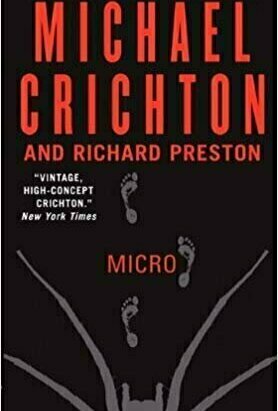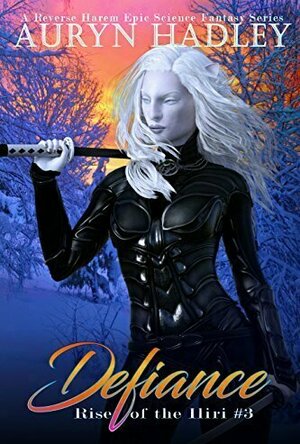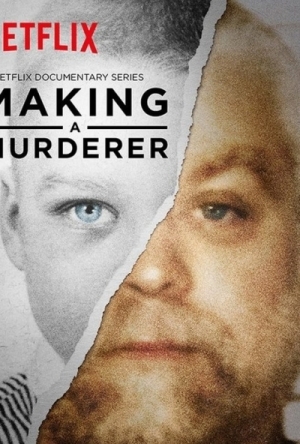Search
Search results
Lee (2222 KP) rated Weathering with You (2019) in Movies
Jan 31, 2020
Weathering With You is another beautifully creative romantic fantasy from director Makoto Shinkai, who was responsible for 2016 hit, Your Name. I only recently watched Your Name, and to say that it blew me away would be an understatement - it's a movie I still think about to this day. So, I headed into Weathering With You, perhaps a little unfairly, with some pretty high expectations. Consequently, I came away a little disappointed. But that's not to say that this isn't a great movie.
As with Your Name, one of the core themes behind Weathering With You is the pursuit of true love and it begins by introducing our teen protagonists before they've had a chance to meet. In rain-soaked Tokyo, Hina is attracted to a beam of sunlight that is cutting through the clouds across town, and she rushes off to try and get a closer look. Running up flights of stairs to a building rooftop, she comes across a simple shrine at the spot where the sunlight hits the Earth. Praying hard, she steps slowly through the shrine gate and the rain stops. We then see Hina falling through the sky, observing beautiful, magical weather all around her.
Hodaka is a 16 year old runaway, traveling by ferry boat to Tokyo. While standing out on deck during a powerful storm, flooding almost sends him overboard, but he is rescued by Mr Suga, a magazine publisher who ends up giving him his business card. After arriving in Tokyo and struggling to find work, Hodaka eventually calls upon Mr Suga, who gives him a job. The heavy rain that almost cost Hodaka his life has been persisting for some time now, despite being the middle of summer, and long range forecasts are predicting no real change for the foreseeable future. Storms are also leaving behind fish-like objects and a strange jelly substance, which is leaving experts baffled.
Hodaka first encounters Hina in the McDonalds where she is working, then later on Hodaka rescues Hina from what he believes to be a dangerous situation and the pair find themselves becoming friends. Through his reporting work at the magazine run by Mr Suga, Hodaka had been investigating the mythical "Weather Maidens", and he discovers that Hina is one of them, with the ability to bring about sunshine through prayer. With Hina and Hodaka both in desperate need of money, they go into business together, taking requests online from people wanting rain-free occasions, such as family picnics or weddings and earning Hina the name "Sunshine Girl". The power of a weather maiden comes at a cost though, as they eventually become a human sacrifice to the skies, with each use of their power bringing that moment one step closer.
The larger premise of Weathering With You is obviously climate change - how messing with nature always comes at a cost and how children have real power to influence change. Visually, the movie is simply stunning, and animated rainfall has never looked so beautiful. It's also peppered with a rather distracting and cheesy J-Pop score, made all the worse if you try and follow the on-screen lyrics, which obviously do not have the same impact when translated literally. Sadly, there are far too many plot threads presented throughout without any clarity or resolution and overall the whole thing just felt too long. Admittedly, it was a pretty high bar set by Your Name, but unfortunately Weathering With You doesn't have the emotional weight to meet that, with a narrative that isn't as complex or as engaging.
As with Your Name, one of the core themes behind Weathering With You is the pursuit of true love and it begins by introducing our teen protagonists before they've had a chance to meet. In rain-soaked Tokyo, Hina is attracted to a beam of sunlight that is cutting through the clouds across town, and she rushes off to try and get a closer look. Running up flights of stairs to a building rooftop, she comes across a simple shrine at the spot where the sunlight hits the Earth. Praying hard, she steps slowly through the shrine gate and the rain stops. We then see Hina falling through the sky, observing beautiful, magical weather all around her.
Hodaka is a 16 year old runaway, traveling by ferry boat to Tokyo. While standing out on deck during a powerful storm, flooding almost sends him overboard, but he is rescued by Mr Suga, a magazine publisher who ends up giving him his business card. After arriving in Tokyo and struggling to find work, Hodaka eventually calls upon Mr Suga, who gives him a job. The heavy rain that almost cost Hodaka his life has been persisting for some time now, despite being the middle of summer, and long range forecasts are predicting no real change for the foreseeable future. Storms are also leaving behind fish-like objects and a strange jelly substance, which is leaving experts baffled.
Hodaka first encounters Hina in the McDonalds where she is working, then later on Hodaka rescues Hina from what he believes to be a dangerous situation and the pair find themselves becoming friends. Through his reporting work at the magazine run by Mr Suga, Hodaka had been investigating the mythical "Weather Maidens", and he discovers that Hina is one of them, with the ability to bring about sunshine through prayer. With Hina and Hodaka both in desperate need of money, they go into business together, taking requests online from people wanting rain-free occasions, such as family picnics or weddings and earning Hina the name "Sunshine Girl". The power of a weather maiden comes at a cost though, as they eventually become a human sacrifice to the skies, with each use of their power bringing that moment one step closer.
The larger premise of Weathering With You is obviously climate change - how messing with nature always comes at a cost and how children have real power to influence change. Visually, the movie is simply stunning, and animated rainfall has never looked so beautiful. It's also peppered with a rather distracting and cheesy J-Pop score, made all the worse if you try and follow the on-screen lyrics, which obviously do not have the same impact when translated literally. Sadly, there are far too many plot threads presented throughout without any clarity or resolution and overall the whole thing just felt too long. Admittedly, it was a pretty high bar set by Your Name, but unfortunately Weathering With You doesn't have the emotional weight to meet that, with a narrative that isn't as complex or as engaging.
Night Reader Reviews (683 KP) rated Micro in Books
Jan 9, 2020
Review Just becasue
The book Micro by Michael Crichton and Richard Prestom was great. I may be a little biased because Michael Crichton is one of my favorite authors but at the same time I hold his work to a specific standard that he must meet or else I'm disappointed. Like most of his work Micro touches on some topics that as a society we should be aware of. It warns us of some disasters that new technology, being worked on or possibly already created, can cause. It id also an eye opener to the dangers of that our inventions pose.
In Micro a group of young graduate students at a college or approached by the head of a company called Nanigen. The graduate students are invited out to the Nanigen lab in Hawaii to see for themselves the work being done there and to see if they want to work for the company. Out of curiosity all the approached graduate students agree to go but their trip to Hawaii becomes more than what they bargain for.
Nanigen is studying the micro world mainly looking for chemicals that micro animals are making that could be useful to humans in some way. Also like many scientific companies in the private sector Nanigen is doing top secret work for the government. Greed gets in the way for some of the scientist already working for the company and the trip becomes extremely dangerous and even deadly for the graduate students. Having to deal with micro-bots and new technology never heard of before the students must fight to survive a world very different from our own.
What I like most about the book was one of the same features that keeps me reading Michael Crichton's work. The author does his research very thoroughly. The book may be a work of science fiction but there is a bibliography in the back for the curious reader to be able to learn more about the fascinating topics brought up in the book. For being a work of fiction the animals, plants, chemicals, technology,and scientific concepts are not. What I liked least about the book was how similar to another one of his books it was and how predictable some parts felt to me. Again though, I am very familiar with Michael Crichton's work and that would probably explain why it felt so predictable. I cannot hold that against the book.
Overall I would rate this book a 4 out of 4 and would highly recommend it. It has a very strong story and is believable which is an important factor for science fiction. The target readers for this book would start around high school age if not older. I feel like high school students will get the basic concept of what book was talking about but they might be lost on some of the finer detail. It all just depends on if the book is being read for the story or if the reader is interested in science specifically microbiology and nanotechnology.
I feel like I need to note on here that Richard Preston finishing the book did not harm it in any way.
https://facebook.com/nightreaderreviews
In Micro a group of young graduate students at a college or approached by the head of a company called Nanigen. The graduate students are invited out to the Nanigen lab in Hawaii to see for themselves the work being done there and to see if they want to work for the company. Out of curiosity all the approached graduate students agree to go but their trip to Hawaii becomes more than what they bargain for.
Nanigen is studying the micro world mainly looking for chemicals that micro animals are making that could be useful to humans in some way. Also like many scientific companies in the private sector Nanigen is doing top secret work for the government. Greed gets in the way for some of the scientist already working for the company and the trip becomes extremely dangerous and even deadly for the graduate students. Having to deal with micro-bots and new technology never heard of before the students must fight to survive a world very different from our own.
What I like most about the book was one of the same features that keeps me reading Michael Crichton's work. The author does his research very thoroughly. The book may be a work of science fiction but there is a bibliography in the back for the curious reader to be able to learn more about the fascinating topics brought up in the book. For being a work of fiction the animals, plants, chemicals, technology,and scientific concepts are not. What I liked least about the book was how similar to another one of his books it was and how predictable some parts felt to me. Again though, I am very familiar with Michael Crichton's work and that would probably explain why it felt so predictable. I cannot hold that against the book.
Overall I would rate this book a 4 out of 4 and would highly recommend it. It has a very strong story and is believable which is an important factor for science fiction. The target readers for this book would start around high school age if not older. I feel like high school students will get the basic concept of what book was talking about but they might be lost on some of the finer detail. It all just depends on if the book is being read for the story or if the reader is interested in science specifically microbiology and nanotechnology.
I feel like I need to note on here that Richard Preston finishing the book did not harm it in any way.
https://facebook.com/nightreaderreviews
Lyndsey Gollogly (2893 KP) rated Defiance (Rise of the Iliri #3) in Books
Mar 3, 2020
Contains spoilers, click to show
HER ONLY CHOICE IS TO CHANGE HER WORLD…
Salryc Luxx has come a long way in just four years, from slave to conscript, to elite Black Blade assassin, rising rapidly as her extraordinary abilities are revealed. Promoted to lieutenant after capturing a valuable shipment of metals and laying waste to the invading force, she and Cyno, her partner (in war and love), have been entrusted with a dangerous mission: to assassinate the King of Anglia and the five nobles in line for the throne, leaving the path to ascension clear for their own leader.
That’s one side of the story. The other is that she and Cyno have been assigned this suicide mission as Parliament’s first pass at removing the iliri taint from the military. Either way, without the strength of allies, the Conglomerate of Free Citizens cannot turn back the invaders, whose goal is to wipe out the whole iliri species, so Sal and Cyno are the only hope of ending the continental war devastating their species. Traveling for months, they are so far away from their home base that they’re beyond the mental link that connects the pack. They remain committed to their mission—and to each other, but… unhappily disturbed. They can only hope their separation from the pack bring them closer together. But the danger is, in the absence of the pack, their bond will wither.
A kind deed, helping what they take to be a wounded animal, leads to the discovery of their true nature, to strengthening and re-energizing their pack, and to a surprising alliance that offers hope for the future. The wounded animal, they learn, is a graour wolf, a species of ferocious warriors with language and traits nearly identical to iliri. When two of them ask to join her pack, Sal recruits them as Black Blades and the iliri are no longer the only dog in the fight for iliri freedom.
But Anglia is nothing like the Conglomerate of Free Citizens. Anglians discriminate based on gender, not species. Iliri are thought to be just a myth--until Sal shows her face. To convince the king and his council that yes, a woman really can be a soldier, she's going to have to make her own rules. The enemy is moving. She doesn't have time to deal with outdated court manners.
As the defiance of an entire species rises up in her, she really has no choice—she’ll just have to change the world.
Women readers will thrill to the reverse harem idea that pushes the boundaries of epic fantasy in this second world series that may remind some of Avatar without the scary beasts; or even Game Of Thrones, but happier, with more color—and a dazzling female protagonist. Fans of Anne McCaffrey’s Dragonriders of Pern will find Sal’s planet Ogun a thrilling destination for their next fantasy fix
They just keep getting better! Sal and Cyno are out on their own and they are kicking up a storm! We get to meet the Graour who the Iliri are descended from! We get a chance to see a whole new world building. I love the new characters and you are with them every step of the way on the battlefield it's also such a good feeling when the black blades are all back together and loving their new pack mates. It was only a matter of time before Cyno became her number 1 I'm glad Blaec took it well. Looking forward to book 4!
Salryc Luxx has come a long way in just four years, from slave to conscript, to elite Black Blade assassin, rising rapidly as her extraordinary abilities are revealed. Promoted to lieutenant after capturing a valuable shipment of metals and laying waste to the invading force, she and Cyno, her partner (in war and love), have been entrusted with a dangerous mission: to assassinate the King of Anglia and the five nobles in line for the throne, leaving the path to ascension clear for their own leader.
That’s one side of the story. The other is that she and Cyno have been assigned this suicide mission as Parliament’s first pass at removing the iliri taint from the military. Either way, without the strength of allies, the Conglomerate of Free Citizens cannot turn back the invaders, whose goal is to wipe out the whole iliri species, so Sal and Cyno are the only hope of ending the continental war devastating their species. Traveling for months, they are so far away from their home base that they’re beyond the mental link that connects the pack. They remain committed to their mission—and to each other, but… unhappily disturbed. They can only hope their separation from the pack bring them closer together. But the danger is, in the absence of the pack, their bond will wither.
A kind deed, helping what they take to be a wounded animal, leads to the discovery of their true nature, to strengthening and re-energizing their pack, and to a surprising alliance that offers hope for the future. The wounded animal, they learn, is a graour wolf, a species of ferocious warriors with language and traits nearly identical to iliri. When two of them ask to join her pack, Sal recruits them as Black Blades and the iliri are no longer the only dog in the fight for iliri freedom.
But Anglia is nothing like the Conglomerate of Free Citizens. Anglians discriminate based on gender, not species. Iliri are thought to be just a myth--until Sal shows her face. To convince the king and his council that yes, a woman really can be a soldier, she's going to have to make her own rules. The enemy is moving. She doesn't have time to deal with outdated court manners.
As the defiance of an entire species rises up in her, she really has no choice—she’ll just have to change the world.
Women readers will thrill to the reverse harem idea that pushes the boundaries of epic fantasy in this second world series that may remind some of Avatar without the scary beasts; or even Game Of Thrones, but happier, with more color—and a dazzling female protagonist. Fans of Anne McCaffrey’s Dragonriders of Pern will find Sal’s planet Ogun a thrilling destination for their next fantasy fix
They just keep getting better! Sal and Cyno are out on their own and they are kicking up a storm! We get to meet the Graour who the Iliri are descended from! We get a chance to see a whole new world building. I love the new characters and you are with them every step of the way on the battlefield it's also such a good feeling when the black blades are all back together and loving their new pack mates. It was only a matter of time before Cyno became her number 1 I'm glad Blaec took it well. Looking forward to book 4!
Kirk Bage (1775 KP) rated Mother! (2017) in Movies
Mar 3, 2020
Pretentious. Is a word that sends shivers down my spine much more than any pseudo horror movie. It conveys the idea that the creator of a work is out of control, resorting to shock value over intelligent content. If the creator meant it all, then it is not pretentious, only dangerous.
Aronofsky is a difficult beast, because you can’t escape the fact he might deserve to be called pretentious. Such a fierce and singular film-maker, whose hit rate for getting it right is about 1/2. Yet, you can’t deny he has a go! His films are visceral nightmares, even when he pares it down to an earthly tale like The Wrestler. He wants you to feel before thinking. Black Swan pissed people off for this reason too; lucky for him, on that occasion, it mostly worked.
At the artist’s behest, mother! is to be spelled with a small case m, and an exclamation mark. I mean, that is an indicator of this man’s intent. It annoys me, let’s make no bones about it. It also excites me, because he has to live up to it! Opening every critical door available, because if you set yourself up to make that kind of statement, then the work better back it up.
The metaphor is thinly veiled; fooling some at the start that we might be watching a latter day Rosemary’s Baby, or, at the least, an invasion film with clever horror undertones. The mood is marvelously tense in the first hour, as we observe two massively capable actors doing their jobs effortlessly. So watchable are Lawrence and Bardem, that you begin to create your own movie in your mind around what is actually happening. Your own imagination is the star of the first half of this strange film.
It almost isn’t a spoiler anymore, so I will say, that Bardem is God and Lawrence is Gaia, mother earth. Take that onboard from the start and the whole may be more “enjoyble”. Although, Aronofsky doesn’t want you to enjoy it, he wants you to react… remember that! Because in the last hour he will force you to do so, and you probably won’t want to.
As with Requiem For a Dream, you may find yourself applauding the technical skill over the storytelling. With this film as evidence, I am now convinced that his trick is to throw the kitchen sink at you in the hope you will join the dots and find something worth talking about, without him having to bother. If I provide enough spectacle, he muses, they might label me a genius someday. Well, they might. But I won’t.
Yes, it almost makes sense if you crowbar it to, but, come on, it isn’t enough! At least David Lynch makes the weirdness so abstract to defy meaning. Aronofsky is creating dreamscapes that pretend to have relevance and wind up hollow, for the simple fact that we are not fools.
Does the last act violence offend me then? No, not at all. It simply isn’t a powerful enough film to do that. Despite some fine scenes in isolation, the whole of mother! is dead in the water as the work of art it wants to be. My lasting thought of it all is… why is Michelle Pfeiffer not doing more? She is an indestructible gem…
Aronofsky is a difficult beast, because you can’t escape the fact he might deserve to be called pretentious. Such a fierce and singular film-maker, whose hit rate for getting it right is about 1/2. Yet, you can’t deny he has a go! His films are visceral nightmares, even when he pares it down to an earthly tale like The Wrestler. He wants you to feel before thinking. Black Swan pissed people off for this reason too; lucky for him, on that occasion, it mostly worked.
At the artist’s behest, mother! is to be spelled with a small case m, and an exclamation mark. I mean, that is an indicator of this man’s intent. It annoys me, let’s make no bones about it. It also excites me, because he has to live up to it! Opening every critical door available, because if you set yourself up to make that kind of statement, then the work better back it up.
The metaphor is thinly veiled; fooling some at the start that we might be watching a latter day Rosemary’s Baby, or, at the least, an invasion film with clever horror undertones. The mood is marvelously tense in the first hour, as we observe two massively capable actors doing their jobs effortlessly. So watchable are Lawrence and Bardem, that you begin to create your own movie in your mind around what is actually happening. Your own imagination is the star of the first half of this strange film.
It almost isn’t a spoiler anymore, so I will say, that Bardem is God and Lawrence is Gaia, mother earth. Take that onboard from the start and the whole may be more “enjoyble”. Although, Aronofsky doesn’t want you to enjoy it, he wants you to react… remember that! Because in the last hour he will force you to do so, and you probably won’t want to.
As with Requiem For a Dream, you may find yourself applauding the technical skill over the storytelling. With this film as evidence, I am now convinced that his trick is to throw the kitchen sink at you in the hope you will join the dots and find something worth talking about, without him having to bother. If I provide enough spectacle, he muses, they might label me a genius someday. Well, they might. But I won’t.
Yes, it almost makes sense if you crowbar it to, but, come on, it isn’t enough! At least David Lynch makes the weirdness so abstract to defy meaning. Aronofsky is creating dreamscapes that pretend to have relevance and wind up hollow, for the simple fact that we are not fools.
Does the last act violence offend me then? No, not at all. It simply isn’t a powerful enough film to do that. Despite some fine scenes in isolation, the whole of mother! is dead in the water as the work of art it wants to be. My lasting thought of it all is… why is Michelle Pfeiffer not doing more? She is an indestructible gem…
Kirk Bage (1775 KP) rated Making A Murderer - Season 1 in TV
Mar 3, 2020
The phenomenon of “true crime” as entertainment is disturbing. What we are saying when we subscribe to watch these compellingly morbid shows is that, of course, we don’t “enjoy” or condone the crimes themselves. But, we do increasingly expect that without the grotesque detail of primary crime scene evidence, documented visually, we can switch over to another show that will give us our macabre kick. So, it is a dangerous precedent to say that without that factor we won’t engage.
What does make us want to know, and solve, and understand the worst criminal minds of the last century? Do we place ourselves as amateur sleuths and psychologists, so we can have our own opinions on a difficult subject, or do we just want to see the very worst of humanity to satisfy a need to be shocked? One thing for sure is that there is no end to this kind of docu-drama available, especially on Netflix, if we choose to stomach it.
I watched three recently in quick succession, and do feel like I have something to say about it…
First, was the extension of the Making A Murderer case of Steven Avery, which can be credited for re-imagining the scope of this kind of “reality” show on Netflix in late 2015. Without a doubt, the draw of the first series was in showing how corrupt, ambiguous and vague the American criminal system can be. We know this from circus shows such as the OJ Simpson case, that capture a curiosity in the public that must be explored and documented. There is no point in saying, no don’t do it, because eventually we have to know, and current forensic science and film techniques allow us to approach it. Carefully. Oh, so carefully!
In this case, the much criticised production extracts further detail from an undeniably fascinating case of criminal negligence and injustice, without ever providing a new revelation enough to definitively say we now know enough to put it to bed. It focuses largely on the power of Kathleen Zellner as a lawyer of impeccable motives and results to prove the innocence of convicted men.
What we then get is 10 episodes of contrivance that increasingly try to convince us further that this is a miscarriage of justice that must be addressed. The continual message is that there is a conspiracy here, which makes for good TV. Someone doesn’t want this show to have an influence. Who is covering up what? And why is the justice system adamant in disallowing the revelations this show throws up so regularly? In the end it becomes less about the victim and the crime, as an indictment of a process that does not want to be examined. The power of this show has always been that something is rotten in Denmark. But what exactly?
There is no doubt at all that once involved you have to keep watching. It is exceptionally presented, and therefore successful as an entertainment because of that. The complexity of the argument comes not in the real recordings of conversations and evidence, but in the form of presentation as a TV show. A question, I am certain, the film-makers themselves constantly ask. It is about finding “truth” for the families of the victims; a crusade that may or may not include individuals wrongly accused of a crime.
What does make us want to know, and solve, and understand the worst criminal minds of the last century? Do we place ourselves as amateur sleuths and psychologists, so we can have our own opinions on a difficult subject, or do we just want to see the very worst of humanity to satisfy a need to be shocked? One thing for sure is that there is no end to this kind of docu-drama available, especially on Netflix, if we choose to stomach it.
I watched three recently in quick succession, and do feel like I have something to say about it…
First, was the extension of the Making A Murderer case of Steven Avery, which can be credited for re-imagining the scope of this kind of “reality” show on Netflix in late 2015. Without a doubt, the draw of the first series was in showing how corrupt, ambiguous and vague the American criminal system can be. We know this from circus shows such as the OJ Simpson case, that capture a curiosity in the public that must be explored and documented. There is no point in saying, no don’t do it, because eventually we have to know, and current forensic science and film techniques allow us to approach it. Carefully. Oh, so carefully!
In this case, the much criticised production extracts further detail from an undeniably fascinating case of criminal negligence and injustice, without ever providing a new revelation enough to definitively say we now know enough to put it to bed. It focuses largely on the power of Kathleen Zellner as a lawyer of impeccable motives and results to prove the innocence of convicted men.
What we then get is 10 episodes of contrivance that increasingly try to convince us further that this is a miscarriage of justice that must be addressed. The continual message is that there is a conspiracy here, which makes for good TV. Someone doesn’t want this show to have an influence. Who is covering up what? And why is the justice system adamant in disallowing the revelations this show throws up so regularly? In the end it becomes less about the victim and the crime, as an indictment of a process that does not want to be examined. The power of this show has always been that something is rotten in Denmark. But what exactly?
There is no doubt at all that once involved you have to keep watching. It is exceptionally presented, and therefore successful as an entertainment because of that. The complexity of the argument comes not in the real recordings of conversations and evidence, but in the form of presentation as a TV show. A question, I am certain, the film-makers themselves constantly ask. It is about finding “truth” for the families of the victims; a crusade that may or may not include individuals wrongly accused of a crime.
Kirk Bage (1775 KP) rated Norman F**king Rockwell by Lana Del Rey in Music
Mar 3, 2020
I have had a mixed relationship with the music of Lana Del Rey since her sensational debut album, Born To Die in 2010. I loved that album, and played it a lot! I still do. But always felt like it wasn’t really for me, yet I couldn’t help replaying it and humming the tunes. I also loved the lyrics, with their scathing satire of American life and values, and their downbeat vibe, always on the point of mania or depression, but never crying out for help, merely saying “look, this is our world, fuck it!” The trouble was, for the next 4 albums, despite one or two standout songs, the message and tone got mired in monotony and lack of memorable melodies – although the lyrics were still there.
I had all but given up hope of her becoming an artist of real worth by the end of the decade. It was a case of “remember when Lana Del Rey was the next big thing?” So, I was not expecting her sixth album to be not only very very good again, but potentially her best work to date, even surpassing Born To Die! You could hear it on the first listen – which for me took till December last year, despite its late August release. The reviews had been great, the award nominations rolled in and my attention was caught by this artist once again.
It took only a handful of listens before I had decided this was a great album! And now I am playing it a couple of times a week, continuing to get more out of the lyrics every time. It also plays really well as quiet background music, or loud, as a melancholy rock-out – a trick that isn’t easy to achieve. Her knowing nod to pop culture references, and the divine mixture of 50s Americana, folk and blues, can be a wonderful thing when it works. With six singles already released, there is proof this album has a more solid backbone tune-wise than the previous four efforts.
The task now is making her brand popular again in the singles market, as not one of the six released made it into the top 40, either stateside or in UK. However, the album was #3 in America and #1 in the UK, which gives me more hope that what we are seeing is the maturing of a genuine music artist, and not just an act, existing for sales. There are many, especially solo female artists, that could follow that example; worry more about making good music and less about “the product” and great things can happen.
For me, I love tracks 1-5 played in that order: they are all great tunes, and Venice Bitch at a playing time of 9:38 is an epic pop opus that makes me want to stand up and applaud! The final track, Hope is a Dangerous Thing for a Woman Like Me to Have, But I Have It, is also highly praiseworthy, summing up the message of the whole work beautifully. And it is a fine, honest, feminist, strong yet always vulnerable message. California is a long way away from my world, but I feel I know what she is talking about, somehow.
Look out also for some mesmeric retro home-movie videos on YouTube that segue some of the songs into a dreamy montage. Big fan!
I had all but given up hope of her becoming an artist of real worth by the end of the decade. It was a case of “remember when Lana Del Rey was the next big thing?” So, I was not expecting her sixth album to be not only very very good again, but potentially her best work to date, even surpassing Born To Die! You could hear it on the first listen – which for me took till December last year, despite its late August release. The reviews had been great, the award nominations rolled in and my attention was caught by this artist once again.
It took only a handful of listens before I had decided this was a great album! And now I am playing it a couple of times a week, continuing to get more out of the lyrics every time. It also plays really well as quiet background music, or loud, as a melancholy rock-out – a trick that isn’t easy to achieve. Her knowing nod to pop culture references, and the divine mixture of 50s Americana, folk and blues, can be a wonderful thing when it works. With six singles already released, there is proof this album has a more solid backbone tune-wise than the previous four efforts.
The task now is making her brand popular again in the singles market, as not one of the six released made it into the top 40, either stateside or in UK. However, the album was #3 in America and #1 in the UK, which gives me more hope that what we are seeing is the maturing of a genuine music artist, and not just an act, existing for sales. There are many, especially solo female artists, that could follow that example; worry more about making good music and less about “the product” and great things can happen.
For me, I love tracks 1-5 played in that order: they are all great tunes, and Venice Bitch at a playing time of 9:38 is an epic pop opus that makes me want to stand up and applaud! The final track, Hope is a Dangerous Thing for a Woman Like Me to Have, But I Have It, is also highly praiseworthy, summing up the message of the whole work beautifully. And it is a fine, honest, feminist, strong yet always vulnerable message. California is a long way away from my world, but I feel I know what she is talking about, somehow.
Look out also for some mesmeric retro home-movie videos on YouTube that segue some of the songs into a dreamy montage. Big fan!
Gareth von Kallenbach (980 KP) rated Divergent (2014) in Movies
Aug 6, 2019
One Choice, decided your friends. One Choice, defines your beliefs. One Choice, determines your loyalties – Forever. ONCE CHOICE CAN TRANSFORM YOU”
Beatrice Prior lives in a futuristic version of Chicago wherein it is divided into five different distinct factions. Each faction is dedicated to following one single virtue. The first faction is Abnegation, known as the “stiffs” of the community. It was formed by those who blame selfishness for human nature’s errors; thereby eliminating anything that can be seen as being selfish. Dauntless was formed by those who blamed cowardice for society’s problems; thereby finding bravery by facing ones fears. Erudite- the “brains” of the operation. Run by those who blamed human ignorance for the faults of society. They formed Erudite as a way of eliminating ignorance and darkness from human minds. Amity- the “flower children” who dislike war, was formed in order to keep a peaceful society that would be free from conflict and sadness caused by wars and instigation. Candor- a faction formed by those who blame duplicity and deception, who believe that dishonesty is the key fault in human nature which began evil and war. There are also those who do not fit into any of the factions. Those people are called The Factionless and are people who are poor and live on the streets. There are few who possess the traits of all five factions. They are called The Divergent. Being a Divergent is considered extremely dangerous because their minds can not be controlled.
The only way to find out which faction one belongs to is by taking an aptitude test. It’s not until the ceremony that a person chooses to join a faction according to the test results. Beatrice doesn’t have the luxury of knowing which faction she belongs to because her test results came back as inconclusive meaning she is in fact a Divergent. She chooses to leave her mother and father behind in Abnegation and decides to join Dauntless while her brother is placed into Erudite. The family is torn apart without knowing her secret of being a Divergent. After she arrives into Dauntless she is forced to be brave by overcoming obstacles, finding love and making friends while finding herself in a war that tries to overthrow the government.
I was pleasantly surprised with how much action this film has. Without reading the books prior to screening the film, it is hard to say if the film follows closely to the book Honestly I did not have high hopes for the film and I’m not sure why other than its story being somewhat similar to The Hunger Games in all of its dystopian glory. I am glad to report that though the two stories are alike they are unique in their own way. One is not better than the other, they are just different and should not be misconstrued as being the same type of story. The acting is exceptional! The actors are perfect at portraying their characters. After being sucked in from beginning to end it not only left me wanting more but it left me wanting to know the characters more. I am left with wanting to read the series of books that much more!
“I feel like someone breathed new air into my lungs. I am not Abnegation. I am not Dauntless.
I am Divergent.”
Beatrice Prior lives in a futuristic version of Chicago wherein it is divided into five different distinct factions. Each faction is dedicated to following one single virtue. The first faction is Abnegation, known as the “stiffs” of the community. It was formed by those who blame selfishness for human nature’s errors; thereby eliminating anything that can be seen as being selfish. Dauntless was formed by those who blamed cowardice for society’s problems; thereby finding bravery by facing ones fears. Erudite- the “brains” of the operation. Run by those who blamed human ignorance for the faults of society. They formed Erudite as a way of eliminating ignorance and darkness from human minds. Amity- the “flower children” who dislike war, was formed in order to keep a peaceful society that would be free from conflict and sadness caused by wars and instigation. Candor- a faction formed by those who blame duplicity and deception, who believe that dishonesty is the key fault in human nature which began evil and war. There are also those who do not fit into any of the factions. Those people are called The Factionless and are people who are poor and live on the streets. There are few who possess the traits of all five factions. They are called The Divergent. Being a Divergent is considered extremely dangerous because their minds can not be controlled.
The only way to find out which faction one belongs to is by taking an aptitude test. It’s not until the ceremony that a person chooses to join a faction according to the test results. Beatrice doesn’t have the luxury of knowing which faction she belongs to because her test results came back as inconclusive meaning she is in fact a Divergent. She chooses to leave her mother and father behind in Abnegation and decides to join Dauntless while her brother is placed into Erudite. The family is torn apart without knowing her secret of being a Divergent. After she arrives into Dauntless she is forced to be brave by overcoming obstacles, finding love and making friends while finding herself in a war that tries to overthrow the government.
I was pleasantly surprised with how much action this film has. Without reading the books prior to screening the film, it is hard to say if the film follows closely to the book Honestly I did not have high hopes for the film and I’m not sure why other than its story being somewhat similar to The Hunger Games in all of its dystopian glory. I am glad to report that though the two stories are alike they are unique in their own way. One is not better than the other, they are just different and should not be misconstrued as being the same type of story. The acting is exceptional! The actors are perfect at portraying their characters. After being sucked in from beginning to end it not only left me wanting more but it left me wanting to know the characters more. I am left with wanting to read the series of books that much more!
“I feel like someone breathed new air into my lungs. I am not Abnegation. I am not Dauntless.
I am Divergent.”
Debbiereadsbook (1617 KP) rated Alpha's Embrace (Omega Misfits #3) in Books
Apr 19, 2020
a needed addition but falls far flat of the other two books
Independent reviewer for Gay Romance Reviews, I was gifted my copy of this book.
This is book 3 in the Omega Misfits series, but you don't need to have read Trust No Alpha (book 1) or The Alpha's Fake Mate (book 2) before you read this one. They all take place in the same world, but can totally be read as a stand alone read. I HAVE read them, although I did not write reviews for them as I read them via the Unlimited programme.
And I found THIS one the weakest of the three.
Alphas are supposed to mate with Omegas and ONLY with Omegas. However when 2 Omegas mate, and produce a child, that child is a Sylph. Sylph children are removed from society and kept locked up for their own good. They live with a constant Burn, unlike Alphas who get them regularly, and most do not live into adulthood for going insane.
Misha is such a child. Well, not a child, he is well into adulthood and a bit of an anomoly. He can control his Burn, and be a productive member of society, BUT for the fact he is Sylph. Geo is an Alpha and the new general manager at the facility where Misha lives. When Geo touches Misha without gloves, a bond begins. A bond that is as illegal as it is dangerous. To BOTH of them.
Both Misha and Geo know this is different, whatever they are feeling, but Geo is best able to voice it and rationalise what is happening between them. Misha is, for want of a better explanation, away with the fairies most of the time, but then again, being locked up all the time would make anyone so. Misha KNOWS he is Sylph, he KNOWS he cannot bond, so he doesn't know what this is between him and Geo. He KNOWS he wants Geo, in a way that is different to his usual want (Sylphs want everyone) he just doesn't know what to do. Geo makes the decision, but Misha is given a choice. I liked that it took time for them to act on the bond, to consummate it. They both have thoughts about the other, it just takes time for them to act on it. I've filed it as m-preg, cos it is talked about and does appear in other books in the series, but there isn't any here.
Both guys have a say, in the first person. Misha's voice is a little airy-fairy, like I said and Geo's is very much an Alpha, but he does go a little off the rails, and that comes out of nowhere, to be honest. I found Geo the least liked of the three Alphas in these books and I cannot pinpoint exactly why.
I liked how it all sorted out, but I would have liked a bit of an epilogue, a some-time-later type thing, to catch up on them, and how things pan out after what they did, and whether things had changed for Misha with a fully formed bond.
A nice read, a GOOD addition to the series though and I think it really was needed, a story about the Slyph children, who are talked about in the other books. This book just didn't push my buttons as the other two did, I'm afraid.
3 good solid stars
**same worded review will appear elsewhere**
This is book 3 in the Omega Misfits series, but you don't need to have read Trust No Alpha (book 1) or The Alpha's Fake Mate (book 2) before you read this one. They all take place in the same world, but can totally be read as a stand alone read. I HAVE read them, although I did not write reviews for them as I read them via the Unlimited programme.
And I found THIS one the weakest of the three.
Alphas are supposed to mate with Omegas and ONLY with Omegas. However when 2 Omegas mate, and produce a child, that child is a Sylph. Sylph children are removed from society and kept locked up for their own good. They live with a constant Burn, unlike Alphas who get them regularly, and most do not live into adulthood for going insane.
Misha is such a child. Well, not a child, he is well into adulthood and a bit of an anomoly. He can control his Burn, and be a productive member of society, BUT for the fact he is Sylph. Geo is an Alpha and the new general manager at the facility where Misha lives. When Geo touches Misha without gloves, a bond begins. A bond that is as illegal as it is dangerous. To BOTH of them.
Both Misha and Geo know this is different, whatever they are feeling, but Geo is best able to voice it and rationalise what is happening between them. Misha is, for want of a better explanation, away with the fairies most of the time, but then again, being locked up all the time would make anyone so. Misha KNOWS he is Sylph, he KNOWS he cannot bond, so he doesn't know what this is between him and Geo. He KNOWS he wants Geo, in a way that is different to his usual want (Sylphs want everyone) he just doesn't know what to do. Geo makes the decision, but Misha is given a choice. I liked that it took time for them to act on the bond, to consummate it. They both have thoughts about the other, it just takes time for them to act on it. I've filed it as m-preg, cos it is talked about and does appear in other books in the series, but there isn't any here.
Both guys have a say, in the first person. Misha's voice is a little airy-fairy, like I said and Geo's is very much an Alpha, but he does go a little off the rails, and that comes out of nowhere, to be honest. I found Geo the least liked of the three Alphas in these books and I cannot pinpoint exactly why.
I liked how it all sorted out, but I would have liked a bit of an epilogue, a some-time-later type thing, to catch up on them, and how things pan out after what they did, and whether things had changed for Misha with a fully formed bond.
A nice read, a GOOD addition to the series though and I think it really was needed, a story about the Slyph children, who are talked about in the other books. This book just didn't push my buttons as the other two did, I'm afraid.
3 good solid stars
**same worded review will appear elsewhere**

Car Driving School: Parking 3D - Car Drive Parking Career and Driving Test Run Game
Games and Entertainment
App
Car Driving School Parking 2016 is the brand new car driving and parking simulation game where you...

Nursing Drug Handbook
Medical and Reference
App
Find complete monographs on over 3,500 generic and brand-name drugs—including 49 new drugs...







